I’m reminded of the old adage, “Hindsight Is 20-20” as the new decade and new year approaches. I suppose one of the reasons is rather apparent since the New Year will actually be 2020. The less obvious reflection however, is that the beliefs and traditions of our culture and of our family helped to build the person we have each become. Certainly eating certain foods or celebrating an important occasion in a long-held traditional way didn’t magically change or enhance the course of our lives. However, embracing our roots, learning about our culture, learning the importance of strong family units and incorporating their values HAS made a difference in many lives.
My immediate family as well as my entire extended family of grandparents, aunts, uncles and cousins would gather on New Years Eve to celebrate the arrival of the new year. When I was very young, the party would be a mixture of family members from both my mother’s and father’s sides. It was held at our house, and would include the obligatory “shots and beer” for my uncles and the very proper “whisky sours’ for my aunts. We kids would enjoy either our Mission Grape or Mission Orange, or our choice of any Regent pop flavor we would like.
cousins would gather on New Years Eve to celebrate the arrival of the new year. When I was very young, the party would be a mixture of family members from both my mother’s and father’s sides. It was held at our house, and would include the obligatory “shots and beer” for my uncles and the very proper “whisky sours’ for my aunts. We kids would enjoy either our Mission Grape or Mission Orange, or our choice of any Regent pop flavor we would like.
Finger food would be set out on our dining room table during the early evening and would include beet-pickled eggs; vegetable trays including radishes, green onions and olives; cold cuts of chipped ham, cold kielbasa, and jumbo (bologna); rye bread, sandwich rolls, swiss cheese and various condiments. Various homemade baked goods, including nut and poppyseed rolls and cold dough apricot horns would dot the table as well. Amazingly, the food would sit for hours upon hours on the table without any means of refrigeration and yet never cause anyone to get sick.
As the party progressed, the record player would be cranked-up with the Big Band sound of Glenn Miller, the romantic strings of Mantovani, or the velvety smooth voice of Nat King Cole or Perry Como. In what had to be the tiniest dance floor ever, our living room, the adults would manage to do their best Fred and Ginger impression and dance the year away as if no one was watching. I remember sitting on the steps to our second floor and just watching the grow-ups having the best of times. Inevitably, one of my aunts would glace at the stairs and see me sitting there. Then, in her best whiskey sour enhanced voice, she would invite me to dance with her. I of course, being the brave little kid I was, would run like hell up the steps and hide in my room!
of Glenn Miller, the romantic strings of Mantovani, or the velvety smooth voice of Nat King Cole or Perry Como. In what had to be the tiniest dance floor ever, our living room, the adults would manage to do their best Fred and Ginger impression and dance the year away as if no one was watching. I remember sitting on the steps to our second floor and just watching the grow-ups having the best of times. Inevitably, one of my aunts would glace at the stairs and see me sitting there. Then, in her best whiskey sour enhanced voice, she would invite me to dance with her. I of course, being the brave little kid I was, would run like hell up the steps and hide in my room!
As the midnight hour approached, I remember that everyone would take part in a custom that must have had its roots in the Croatian culture. Before the strike of midnight, everyone would be sure that they had placed a coin in their right shoe. This would supposedly bring good luck and wealth to each person. I’ve come to realize that wealth wasn’t necessarily measured financially, but perhaps more so as the abundance of our family’s love and caring for one another. To this day, I still try to remember to place that coin in my shoe on New Year’s Eve, using the dime my mother placed in her shoe on her wedding day.
After the countdown to the new year, the hugs, the kisses, the shots, and the ladies enjoying a glass of Cook’s Champagne, dinner was served. Any decent hunky worth their salt, knew that it was a compulsory tradition to begin the new year with a meal of pork and sauerkraut. The meal had been slowly simmering during the festivities, and would be served up for each party-goer to enjoy. The flavor would be enhanced with the addition of kielbasa and a sprinkling of red kidney beans in the kraut. Large chunks of rye bread with slabs of butter completed the meal. Everyone inhaled the food as if would bring all of the luck they would need for the new year. In reality, it served the dual purpose of helping to mitigate the effects of partying hearty before they hit the road.
New Year’s Eve celebrations took a dramatic turn for my family as 1965 turned into 1966. In November of 1965, my mother suffered a major heart attack that immediately claimed her life. Mom was 42, I was 13 at the time, and my brother Steve, 16. Although my dad did his best to provide a happy holiday for us that year, Mom’s death had devastated us and joyfulness as sadly missing during the holidays of 1965. There weren’t any New Year’s celebrations that year, not only for my immediate family, but likewise for our entire extended families of aunts, uncles and cousins. I remember each and every sibling of my mother and father visiting our home, along with their entire family, each and every day through the Epiphany on January 6th. Although I have tried hard to forget how distressing that holiday season was, I know I’ll never be able to.
After my mother’s death, my dad was a different guy for many, many years. He smiled and laughed less, he worried more, and he struggled to give my brother and I the best upbringing and guidance he could. He did so well, but it took its toll. It wasn’t until many years later that we finally convinced him to try to enjoy Christmas and New Year’s Eve more. For a few years, he would join his friends at the Croatian Club, or Slovak Club, or the GBU to toast in the New Year, but that soon grew old.
Years later, the family wide New Year’s started up again, this time at the home of one of my dad’s brother and his wife. It became the tradition to celebrate at Uncle Hank and Aunt Clare’s for countless years afterward. My Aunt Clare’s nephew played the guitar with Guy Lombardo and His Royal Canadians, and we would sit and watch him play at the Waldorf Astoria televised party each New Year’s Eve.
I hold all of those special times with my relatives near and dear to my heart. Year by year, fewer and fewer people attended the New Year’s celebration. Sadly, people passed away, moved away, grew-up and began traditions of their own, or just opted for quiet New Year’s Eves at home. But to me, New Year’s will eternally be the memory of my mom and dad dancing in our living room to the sound of Nat King Cole.
__________________________________________________
 While I was sharing my memories of New Year’s Eve, perhaps it conjured up some memories of your own. Although many traditions are shared amongst Eastern European Cultures, some are unique to only a few.
While I was sharing my memories of New Year’s Eve, perhaps it conjured up some memories of your own. Although many traditions are shared amongst Eastern European Cultures, some are unique to only a few.
I found the following article that addresses the variety of ways New Year’s Eve is celebrated in Eastern Europe. The article was written by Barbara Rolek, and is jam packed with foods and traditions of many Eastern European cultures.
__________________________________________________
How Eastern Europeans Celebrate New Year’s
By Barbara Rolek Updated 10/02/19
New Year Celebration – Vstock / Getty Images
Along with people worldwide, Eastern Europeans welcome in the New Year with revelry and special foods thought to bring good luck, health, and prosperity. Be sure to click on any of the purple links to learn more about the food or the tradition.
Lucky Foods
- Fish, especially those with silver scales, are thought to symbolize money. Pickled herring is a must for Poles at the stroke of midnight on New Year’s Eve.
- Greens, usually cabbage, are associated with money and, thus, thought to bring good fortune. Eating cabbage probably worked its way into New Year lore because it is a late-fall crop and the best way to preserve it for the winter was by turning it into sauerkraut. Brining cabbage typically takes six to eight weeks, and would be perfect to eat around New Year. Sauerkraut‘s long strands also symbolize a long life.
- Legumes, lentils, and peas also symbolize money as their appearance resembles coins that swell when cooked.
- Poppy seedsare considered a lucky food in Poland, so you will find them throughout the cuisine and especially on Christmas Eve and New Year’s Eve.
- Pork‘s rich fat content symbolizes wealth and prosperity. Pork is also considered a symbol of progress because pigs root forward. Spit-roasted pig is common, as is roast pork loin, sausages and more. The tradition of eating pork probably has more to do with slaughter times than ensuring good fortune.
- Ring-shaped foods like cookies, doughnuts, and bagelssymbolize the year coming full circle and represent eternity.
What Not to Eat
Lobster and crab are considered bad luck because they move backward and could lead to setbacks. Chicken is also a no-no because they scratch backward, and eating any winged fowl is disadvised because this could portend one’s good luck flying away.
Bulgarian New Year Traditions
Štastliva (or Chestita) Nova Godina—Happy New Year in Bulgarian
In Bulgaria, New Year celebrations are week-long affairs featuring processions, musical festivals, carnivals, and sporting events. New Year’s Eve is spent visiting friends, making merry, eating lucky foods and making toasts with rakia (grape brandy) and other potent potables.
New Year’s Day is St. Basil’s feast day or vassilyovden when the health-wishing custom of survaki (also known as sourvakari) is observed. Twigs or small branches of the cornel (dogwood) tree, called survaknitsa (also known as sourvachka), are decorated with brightly colored papers. Children brandish their parents, grandparents, aunts, and uncles with these twigs, wishing them well for the new year. In return, the children are rewarded with nuts, candies, and coins. Alternatively, the men of the village go from house to house to do the blessing.
New Year is also celebrated by wearing new clothes—out with the old and in with the new. New Year’s Day dinner is a lavish affair, as the richer the spread, the more fruitful the coming year will be. A ritual bread is decorated with religious symbols or vines and hives made of bread dough, and a special place is saved for a cheese banitza (also spelled banitsa) with baked-in cornel (dogwood) buds symbolizing home, family and livestock, and promising good health for the coming year.
In western Bulgaria, the central Balkans and in some regions along the Danube River, the custom of ladouvane (also known as koumichene) is observed on New Year’s Eve by women wishing to get married. In the rest of the country, it is celebrated on Midsummer Day. The maidens of the village drop symbols of fertility—rings tied with red string to a spray of fresh ivy or basil, oats and barley—into a kettle full of spring water on Dec. 30. The kettle is left overnight in the open, under the stars and, on New Year’s Eve, following a ritual dance around it, the girls’ fortunes are told.
For Orthodox Christian Bulgarians, who follow the Julian calendar, New Year’s Eve and Day are celebrated Jan. 13-14.
Croatian New Year Traditions
Sretna Nova Godina—Happy New Year in Croatian
In Croatia, New Year’s Eve is celebrated with parties in houses, hotels, discos and public squares. Fireworks on the stroke of midnight are common in the larger cities of Dubrovnik, Hvar, and Split. Lucky foods eaten include sarma, spit-roasted pig (pecenka), and fish and seafood for those living along the Dalmatian coast. Cevapcici, ajvar, burek, coldcut trays, strudels, nut rolls, and so much more are also eaten on New Year’s Day, according to the family’s preferences.
Czech New Year Traditions
Stastny Novy Rok—Happy New Year in Czech
As in Poland, New Year’s Eve is known as St. Sylvester’s Day because it is the saint’s feast day. And, since Prague was his place of birth, the tie is even stronger in The Czech Republic.
New Year’s Eve is party time with various chlebíčky (open-faced sandwiches), nuts, brambůrky (homemade potato chips) and other snacks. Midnight is celebrated by drinking šampaňské (champagne) or some other local sparkling wine. Some Czechs eat vepřový ovar (boiled pork head) with se strouhaným křenem a jablky (grated horseradish and apples) at midnight.
On New Year’s Day, cočka (lentils), a symbol of money, are eaten along with pork and leftover vánoční cukrový.
Hungarian New Year Traditions
Boldog új Evet—Happy New Year in Hungarian
After being carried around the village, effigies of Jack Straw, a scapegoat representing the evils and misfortunes of the past year, are burned on Szilveszter or New Year’s Eve. In big cities, there are public celebrations and parties where young and old dance away the night. There is also a New Year’s ball and concert at the Hungarian State Opera House in Budapest. Street vendors sell masks and noisemakers for the children.
On New Year’s Day, roast suckling pig and lencse fõzelék (lentil soup) are served—both considered lucky foods. While other cultures eat fish because the silver scales are reminiscent of money, eating fish in Hungary is considered unlucky because they will swim away with one’s good fortune.
Lithuanian New Year Traditions
Laimingų Naujųjų Metų — Happy New Year in Lithuanian. In some regions of Lithuania, New Year’s Eve is known as “little Christmas Eve,” and foods similar to those served for Christmas Eve are eaten, except the dishes contain meat. People stay up until midnight because sleeping through the beginning of the new year will bring bad luck. An important part of New Year’s Eve and Day is the telling of fortunes and making predictions.
Polish New Year Traditions
Szczesliwego Nowego Roku—Happy New Year in Polish
New Year’s Eve is known as Sylwester because it falls on the feast day of St. Sylvester. Poles party hearty with good food and drink.
New Year’s Day festivities might include a hayride into the forest where a bonfire is set and sausages, bigos and wodka are enjoyed. Bakers sell bread and rolls in the shape of rabbits, sheep, geese, and cows to assure wealth and good luck for the coming year. Round or ring-shaped bread are also popular because they symbolize life coming full circle and eternity, and pączki are served for dessert. Sylwester begins Carnival—a period of balls and parties before Lent begins.
Romanian New Year Traditions
Un An Nou Fericit (or La Mulţi Ani)—Happy New Year in Romanian
In Romania, lucky foods include sarmale (cabbage rolls) and mititei (a free-formed sausage). The New Year dinner is lavish because it is believed if the meal is rich, so will be the new year. Palinca (plum brandy) is a traditional beverage. Fortune telling is an important part of Romanian New Year customs.
Russian New Year Traditions
S Novim Godom—Happy New Year in Russian
Russian Orthodox Christians who follow the Julian calendar celebrate New Year’s Eve and Day Jan. 13-14. But for those who abide by the government’s New Year based on the Gregorian calendar, it is celebrated Dec. 31-Jan. 1.
Public celebrations, fireworks, drinking vodka and champagne, partying in clubs or in private homes with an abundance of zakuski or “little bites” (appetizers) is traditional.
On New Year’s Day, a sumptuous meal of roast duck, caviar, salad olivier, fish in aspic, mushrooms in cream, nut cookies, New Year Clock Cake, and sbiten, a hot, non-alcoholic or alcoholic spiced drink, are consumed.
Serbian New Year Traditions
Srecna Nova Godina—Happy New Year in Serbian
Most Serbians are Orthodox Christians who celebrate New Year’s Eve and Day on Jan. 13-14, according to the Julian calendar. There is an abundance of food and drink, including sarma, spit-roasted pig, tortes, nut rolls, strudels, and desserts galore. Rakija, a powerful drink of grape brandy, sometimes blended with whiskey and spices, is traditional at this time of year.
Christmas trees are decorated and presents given on New Year’s Day rather than Christmas Day. At midnight on New Year’s Eve, Deda Mraz (Grandpa Frost) visits houses and leaves presents under the tree.
Slovak New Year Traditions
Štastný Nový Rok—Happy New Year in Slovak
New Year’s Eve in Slovakia is celebrated with street and home parties. New Year’s Day dinner might include roast goose, klobása and jaternica sausages. Strudels with nut or poppy seed fillings are popular desserts. Read more about Slovak festivals here
Slovenian New Year Traditions
Srečno Novo Leto—Happy New Year in Slovenian
Outdoor parties with live bands are typical in the larger cities. Feasting is on pork and many rich desserts like Prekmurska Gibanica or potica on New Year’s Day.
Ukrainian New Year Tradition
Z Novym Rokom—Happy New Year in Ukrainian
Feasting on fish, pork, legumes, holubtsi (cabbage rolls), pampushki (stuffed and fried potato ball), cakes and other confections are a big part of Ukrainian New Year’s Eve and Day festivities. Ukrainians, who follow the Julian calendar, celebrate on Jan. 13-14 (although, as in Russia, the national New Year is technically Jan. 1).
Families gather to reflect on the past year, make toasts and predictions about the coming year, and presents are exchanged. Grandfather Frost and his granddaughter, the Snow Maiden, pay a visit.
About the Author:
Barbara Rolek is a former writer for The Spruce who contributed hundreds of articles and recipes for more than eight years. For the past 25 years, she has been a food editor, food writer, and restaurant critic for daily newspapers and magazines including the Chicago Tribune and The New York Times. Barbara worked as an executive chef and pastry chef for more than 15 years at fine-dining establishments and the commissary of a grocery store chain where she instituted the home-meal replacement program.
In addition to her writing, Barbara shares her love of cooking with students at The Cooking Academy of Chicago, Ivy Tech State College and mentoring the Careers through Culinary Arts Program at Corliss High School in Chicago. Her teaching philosophy is to demystify culinary concepts with streamlined techniques and a user-friendly approach to cooking.
Barbara is a graduate of Chicago’s Washburne Culinary Institute, one of the oldest cooking schools in the nation, where she won a scholarship from the Anheuser-Busch company and distinguished herself with outstanding performance as a student.

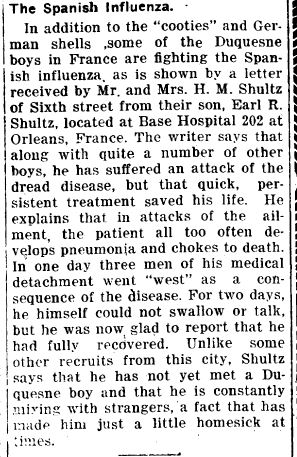
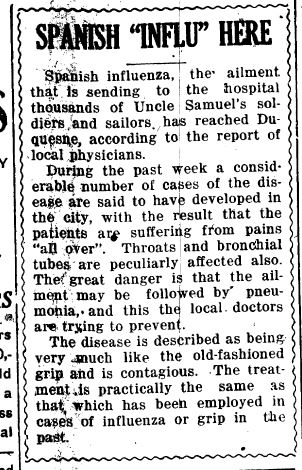









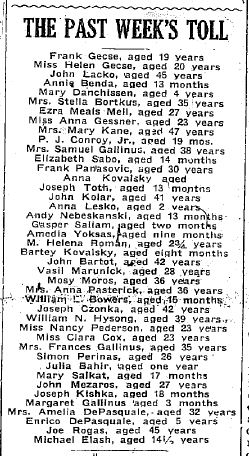

 cousins would gather on New Years Eve to celebrate the arrival of the new year. When I was very young, the party would be a mixture of family members from both my mother’s and father’s sides. It was held at our house, and would include the obligatory “shots and beer” for my uncles and the very proper “whisky sours’ for my aunts. We kids would enjoy either our Mission Grape or Mission Orange, or our choice of any Regent pop flavor we would like.
cousins would gather on New Years Eve to celebrate the arrival of the new year. When I was very young, the party would be a mixture of family members from both my mother’s and father’s sides. It was held at our house, and would include the obligatory “shots and beer” for my uncles and the very proper “whisky sours’ for my aunts. We kids would enjoy either our Mission Grape or Mission Orange, or our choice of any Regent pop flavor we would like. of Glenn Miller, the romantic strings of Mantovani, or the velvety smooth voice of Nat King Cole or Perry Como. In what had to be the tiniest dance floor ever, our living room, the adults would manage to do their best Fred and Ginger impression and dance the year away as if no one was watching. I remember sitting on the steps to our second floor and just watching the grow-ups having the best of times. Inevitably, one of my aunts would glace at the stairs and see me sitting there. Then, in her best whiskey sour enhanced voice, she would invite me to dance with her. I of course, being the brave little kid I was, would run like hell up the steps and hide in my room!
of Glenn Miller, the romantic strings of Mantovani, or the velvety smooth voice of Nat King Cole or Perry Como. In what had to be the tiniest dance floor ever, our living room, the adults would manage to do their best Fred and Ginger impression and dance the year away as if no one was watching. I remember sitting on the steps to our second floor and just watching the grow-ups having the best of times. Inevitably, one of my aunts would glace at the stairs and see me sitting there. Then, in her best whiskey sour enhanced voice, she would invite me to dance with her. I of course, being the brave little kid I was, would run like hell up the steps and hide in my room! While I was sharing my memories of New Year’s Eve, perhaps it conjured up some memories of your own. Although many traditions are shared amongst Eastern European Cultures, some are unique to only a few.
While I was sharing my memories of New Year’s Eve, perhaps it conjured up some memories of your own. Although many traditions are shared amongst Eastern European Cultures, some are unique to only a few.



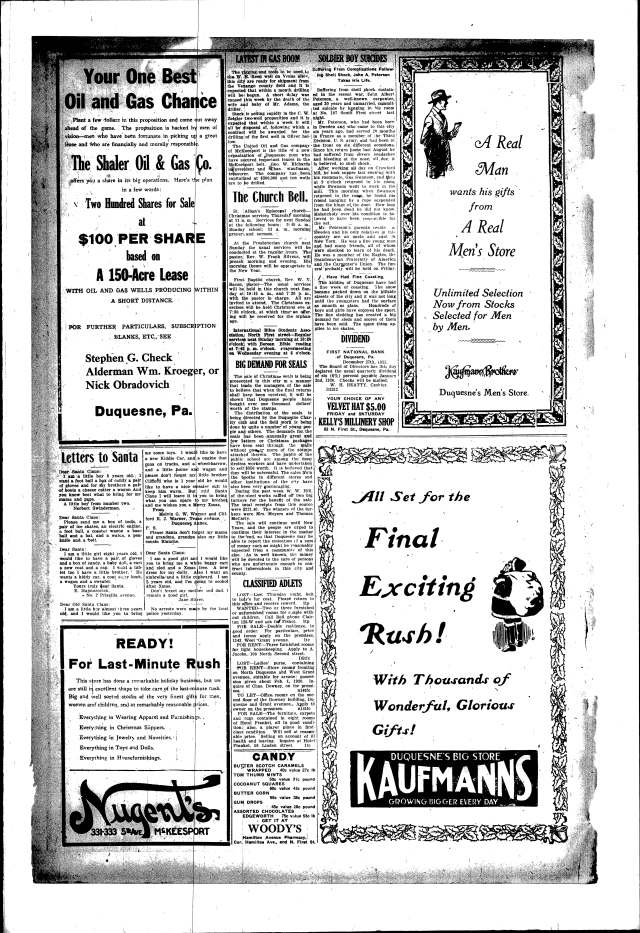
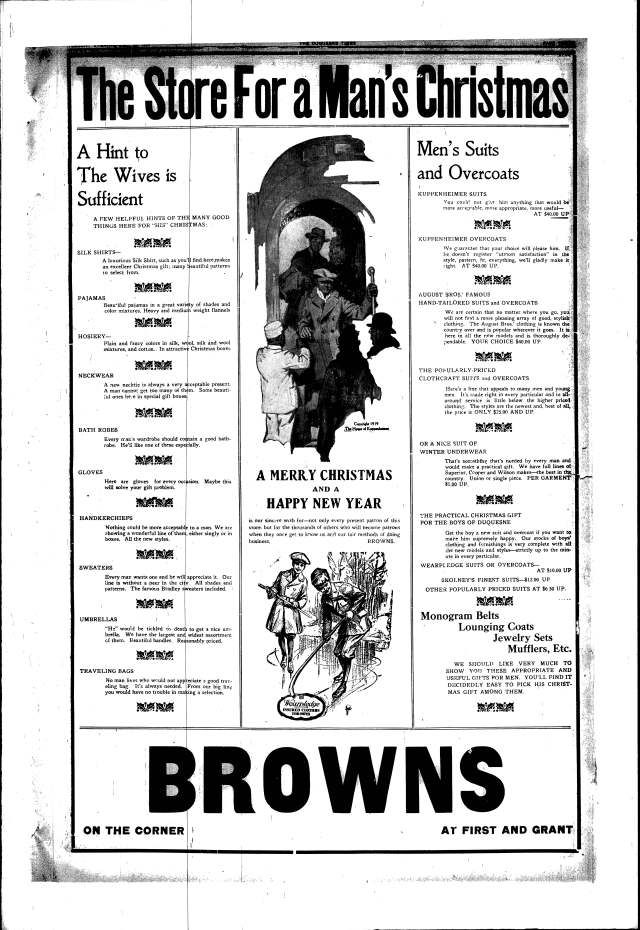


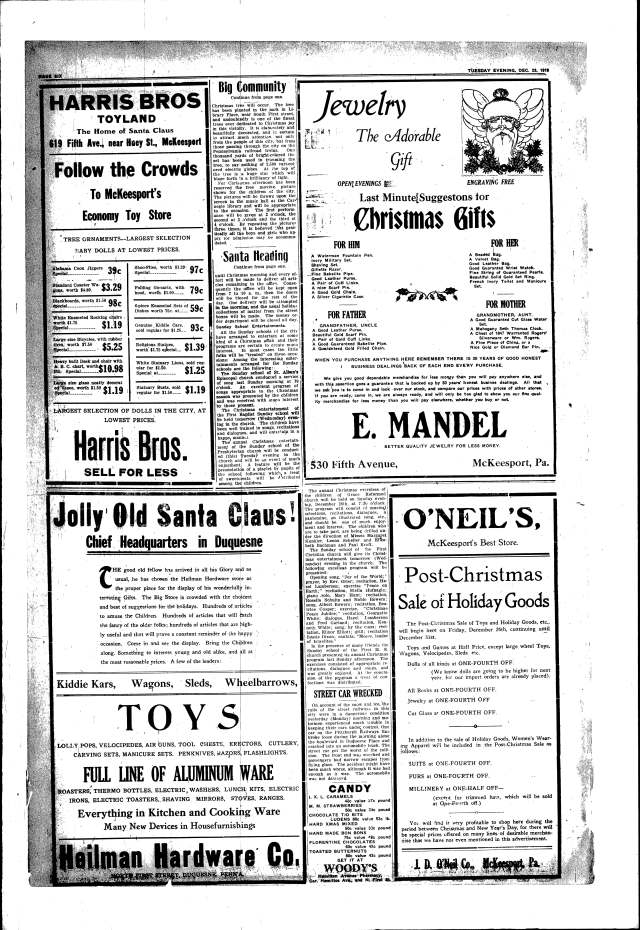

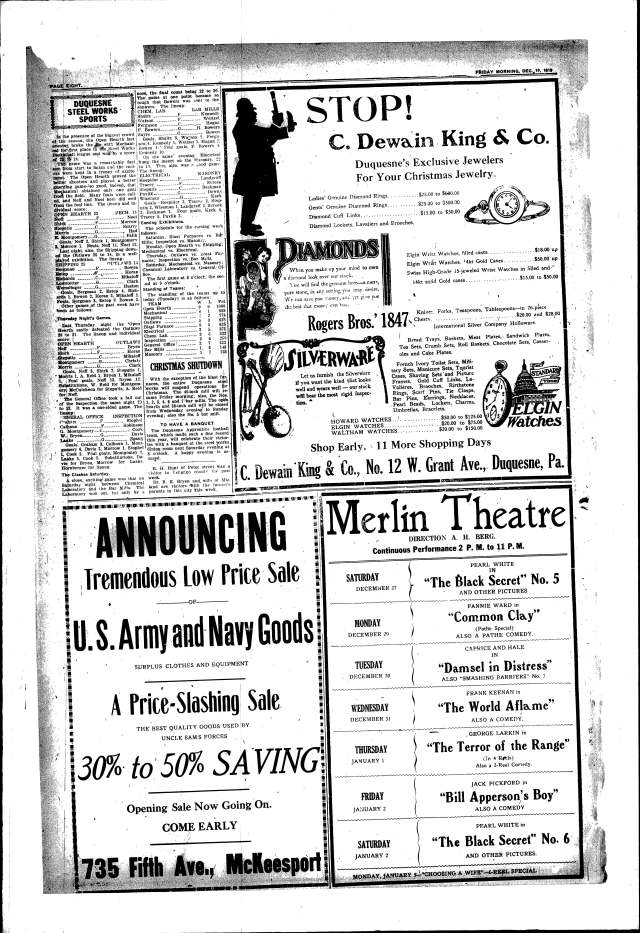
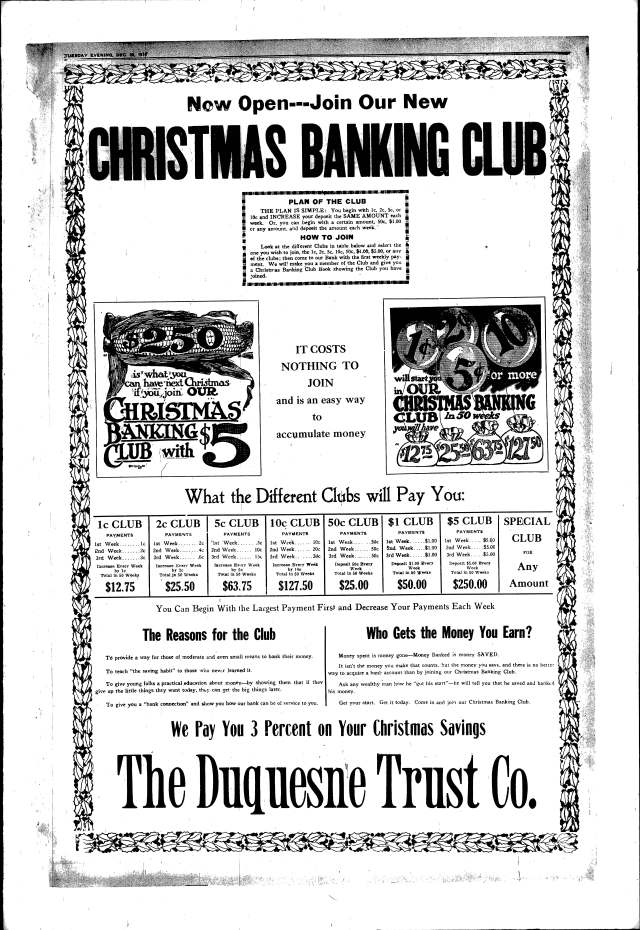


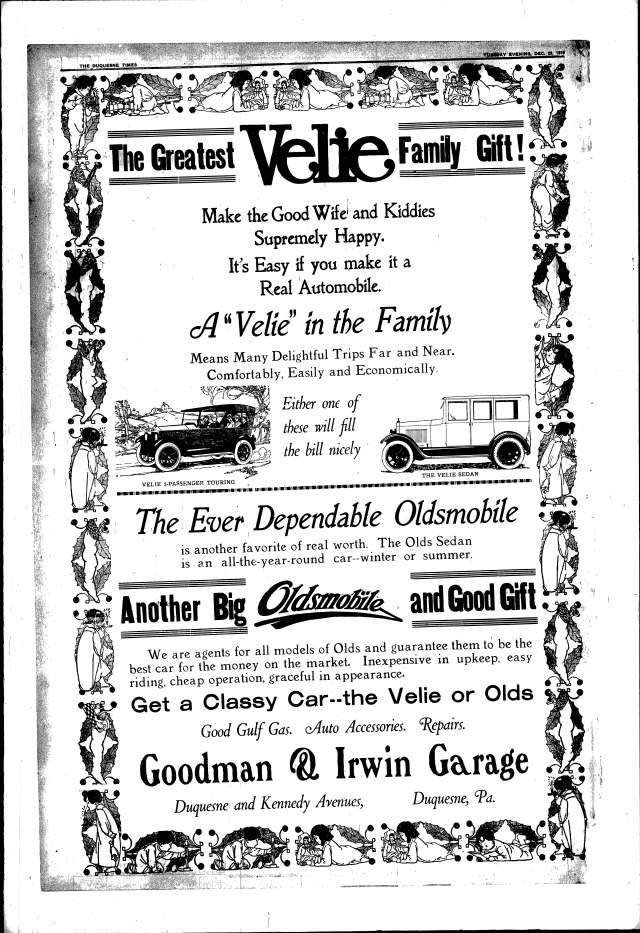
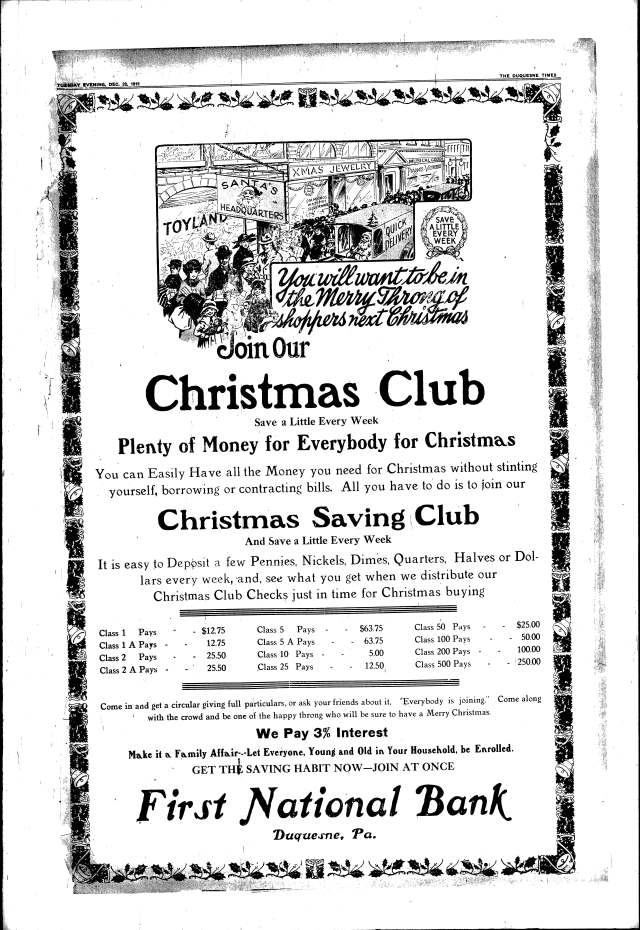

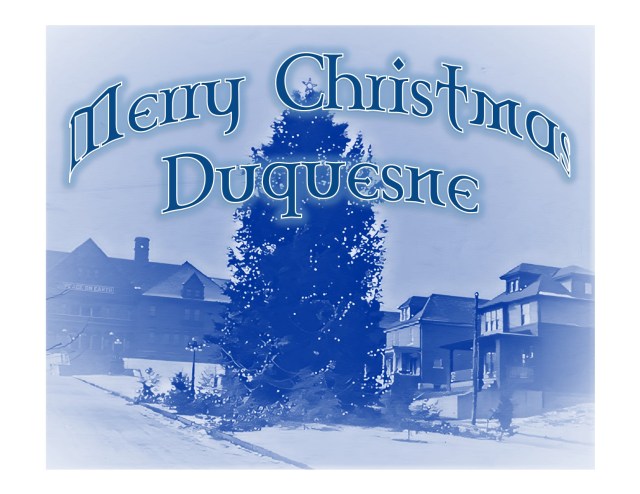



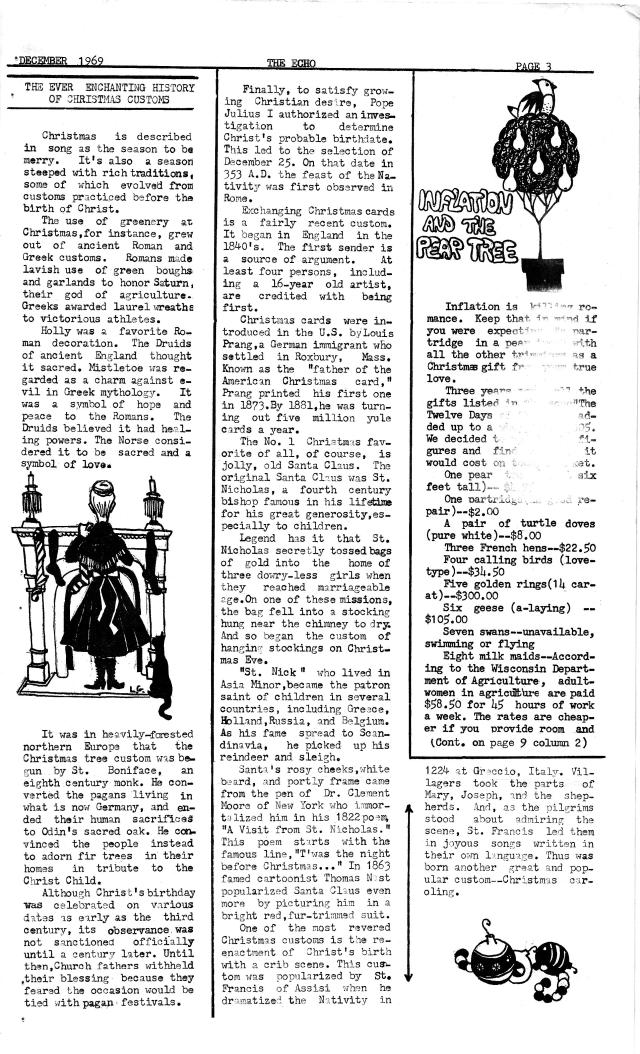
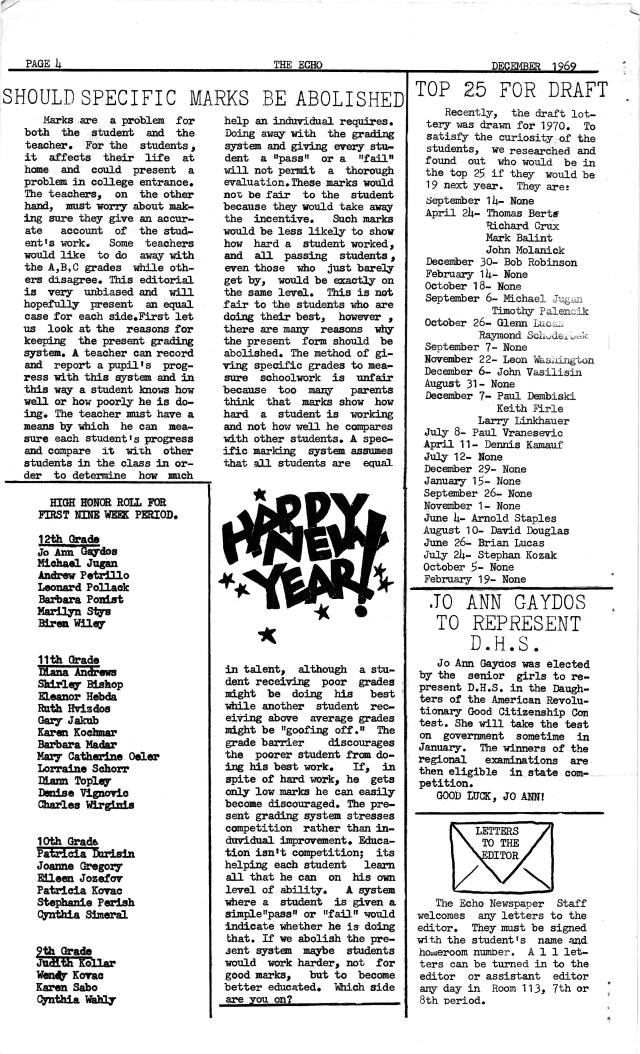
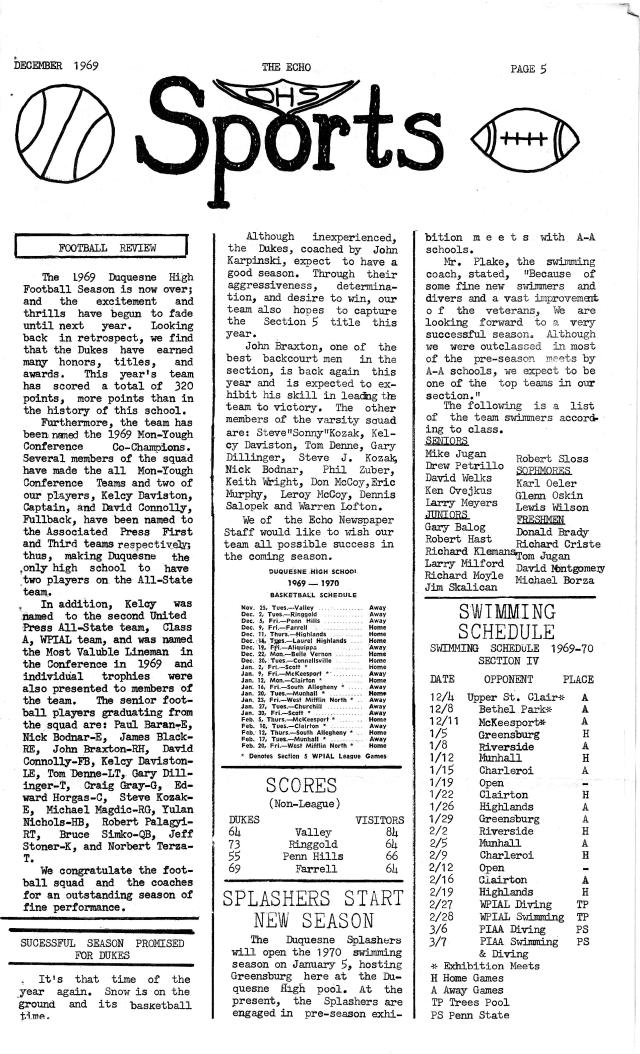

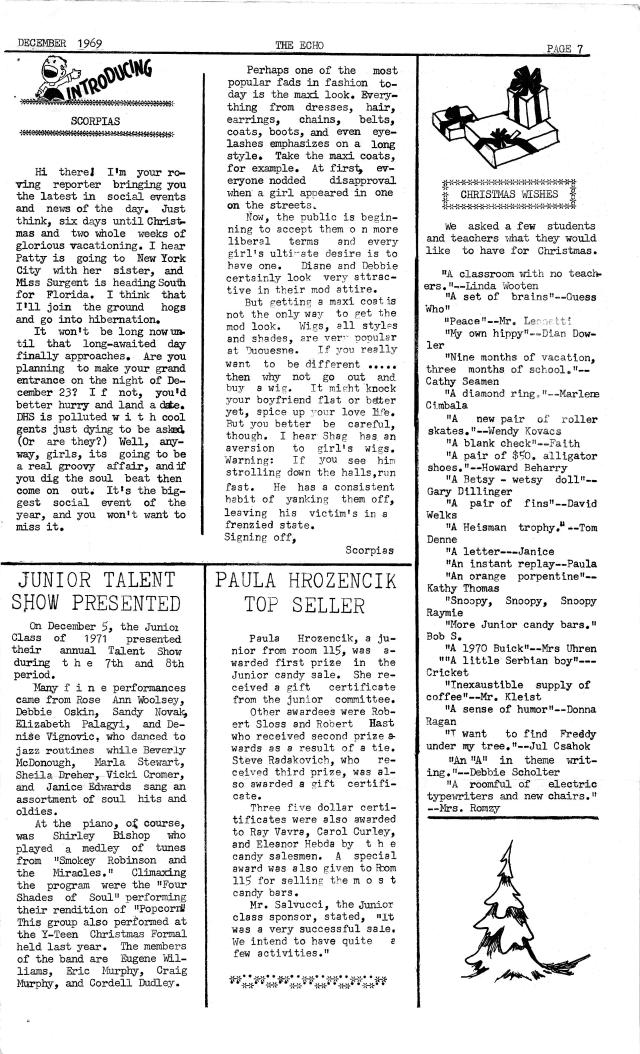

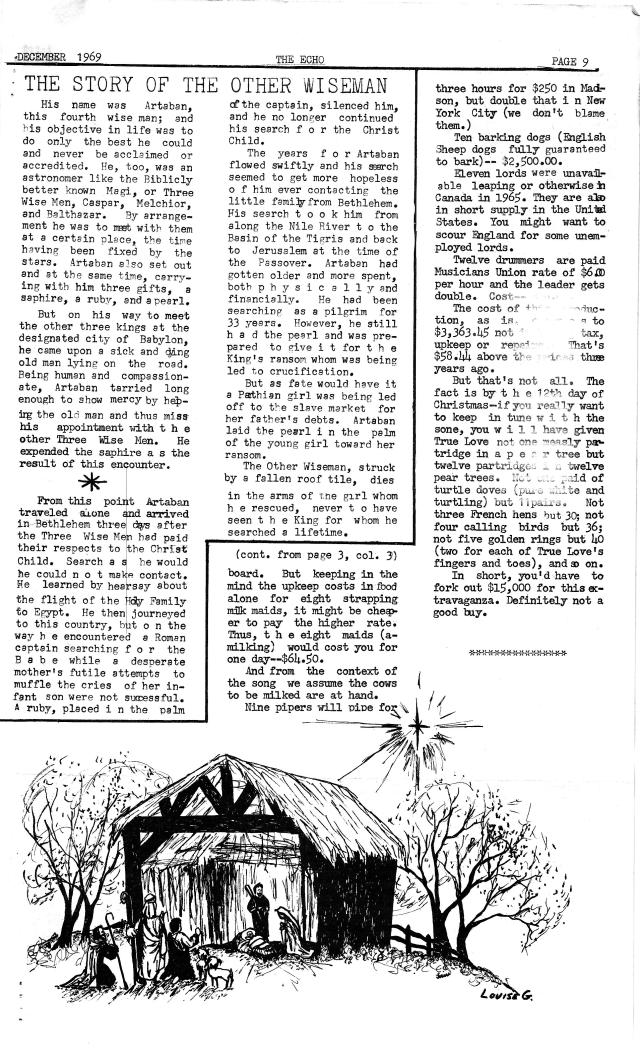

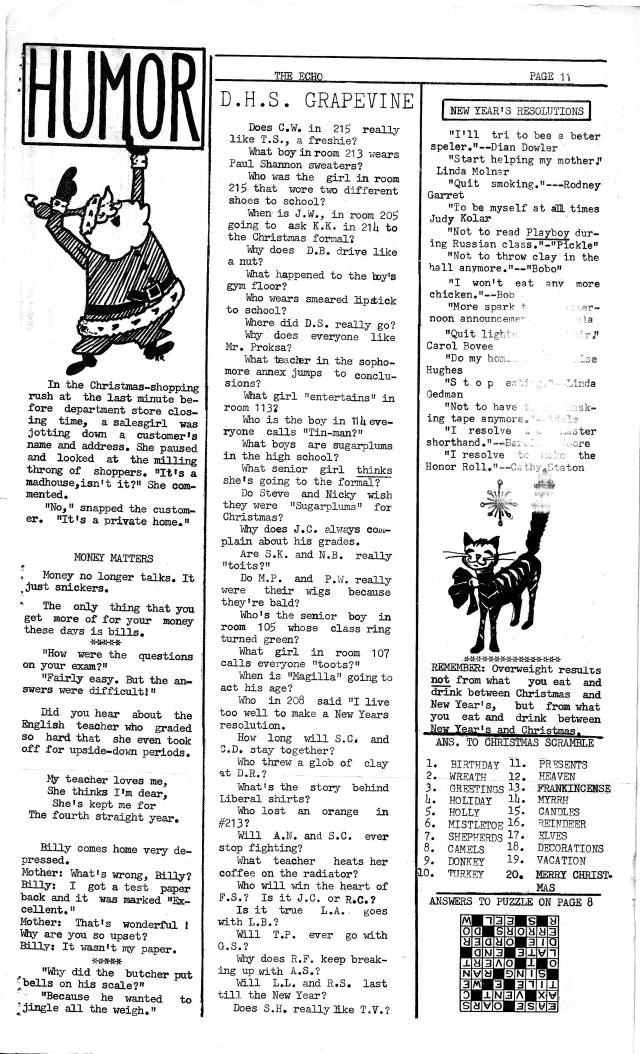








 So, as I was finally able to relax after a delightful day, I began to think about Christmases past, and how they differed from today’s event. I listened to my daughters talk about how they had such an easy time this year shopping for the perfect gift. Both talked about the simple process of online shopping and how less stressful it was compared to battling crowds of shoppers at the malls, or at big box stores like Target or Walmart. They marveled at how they were able to review a store’s entire assortment of merchandise from the comfort of their living room sofa. Ahh…. Technology has made life so easy for them. Since I too did much of my shopping online or via QVC’s TV broadcast, I couldn’t disagree. It was easy. However, as they talked about the merits of online shopping, I thought about similar conveniences that were available to everyone when we were young.
So, as I was finally able to relax after a delightful day, I began to think about Christmases past, and how they differed from today’s event. I listened to my daughters talk about how they had such an easy time this year shopping for the perfect gift. Both talked about the simple process of online shopping and how less stressful it was compared to battling crowds of shoppers at the malls, or at big box stores like Target or Walmart. They marveled at how they were able to review a store’s entire assortment of merchandise from the comfort of their living room sofa. Ahh…. Technology has made life so easy for them. Since I too did much of my shopping online or via QVC’s TV broadcast, I couldn’t disagree. It was easy. However, as they talked about the merits of online shopping, I thought about similar conveniences that were available to everyone when we were young. I don’t think anything could ever replace the joy and excitement I felt when shopping with my mother or father at Christmastime. The stores in Duquesne and McKeesport were brimming with a bounty of Christmas gifts and trimmed in their Christmas finery. Nothing could ever compare to the feeling of the cold wintry air and the warmth that you felt when entering the stores. I don’t recall anyone being grumpy. Salespeople would be smiling and helpful , the need for fighting the crowds was never an issue and people always seemed to have a happy look on their face. It was a magical experience.
I don’t think anything could ever replace the joy and excitement I felt when shopping with my mother or father at Christmastime. The stores in Duquesne and McKeesport were brimming with a bounty of Christmas gifts and trimmed in their Christmas finery. Nothing could ever compare to the feeling of the cold wintry air and the warmth that you felt when entering the stores. I don’t recall anyone being grumpy. Salespeople would be smiling and helpful , the need for fighting the crowds was never an issue and people always seemed to have a happy look on their face. It was a magical experience.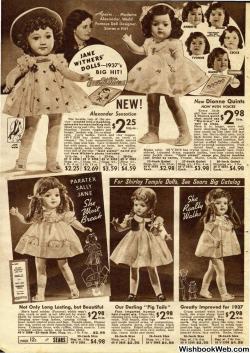 of shopping for the aunts, uncles and cousins that we exchanged gifts with each Christmas. Since I was too young to drive, and school work didn’t allow me a great deal of extra time, I took advantage of the precursor of today’s online shopping, CATALOGUES! Since my dad worked for JCPenney, he received a discount for items purchased in stores, but also for items purchased through the Penney Catalogues. I was able to achieve the same level of shopping simplicity as today’s online shopper, all from the comfort of our living room sofa.
of shopping for the aunts, uncles and cousins that we exchanged gifts with each Christmas. Since I was too young to drive, and school work didn’t allow me a great deal of extra time, I took advantage of the precursor of today’s online shopping, CATALOGUES! Since my dad worked for JCPenney, he received a discount for items purchased in stores, but also for items purchased through the Penney Catalogues. I was able to achieve the same level of shopping simplicity as today’s online shopper, all from the comfort of our living room sofa.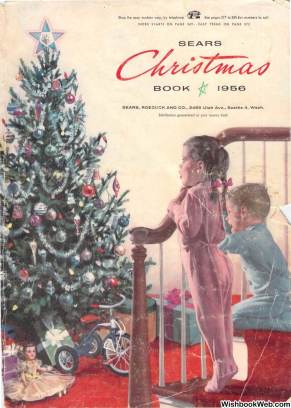 I remember taking hours and meticulously combing through each and every page. I took the job of shopping for the perfect gift very seriously. Each year, after deciding on what I thought was the ideal gift for my aunts, uncles or cousins, I would sit with my dad at the kitchen table and present my ideas to him. I don’t recall a single time when he objected to any selection I had made. Once past that part of the process, I would then be charged with the responsibility of calling in our orders to the Catalogue Desk at JCPenneys in the Eastland Shopping Center in East McKeesport. I would anxiously wait for receive a confirmation that the merchandise was available, and ultimately, when it would be shipped to the Eastland store to be picked-up. This annual process took place for 9 years until I turned 21 and decided to move to California…oh the joys of youth.
I remember taking hours and meticulously combing through each and every page. I took the job of shopping for the perfect gift very seriously. Each year, after deciding on what I thought was the ideal gift for my aunts, uncles or cousins, I would sit with my dad at the kitchen table and present my ideas to him. I don’t recall a single time when he objected to any selection I had made. Once past that part of the process, I would then be charged with the responsibility of calling in our orders to the Catalogue Desk at JCPenneys in the Eastland Shopping Center in East McKeesport. I would anxiously wait for receive a confirmation that the merchandise was available, and ultimately, when it would be shipped to the Eastland store to be picked-up. This annual process took place for 9 years until I turned 21 and decided to move to California…oh the joys of youth. anyone was selling the old Christmas catalogues. I was thrilled to see that there were many vintage catalogs were available, but the ones that interested me were too pricey in my opinion. Some were selling for up to $100! Then, like a beacon in the night, I came across a website that featured full color Christmas catalogues from Sears, Penneys, and others. Catalogues from 1937’s 102-page Sears Christmas Catalogue through JCPenney’s 632 page Christmas Catalogue are able to be viewed in their entirety.
anyone was selling the old Christmas catalogues. I was thrilled to see that there were many vintage catalogs were available, but the ones that interested me were too pricey in my opinion. Some were selling for up to $100! Then, like a beacon in the night, I came across a website that featured full color Christmas catalogues from Sears, Penneys, and others. Catalogues from 1937’s 102-page Sears Christmas Catalogue through JCPenney’s 632 page Christmas Catalogue are able to be viewed in their entirety.








